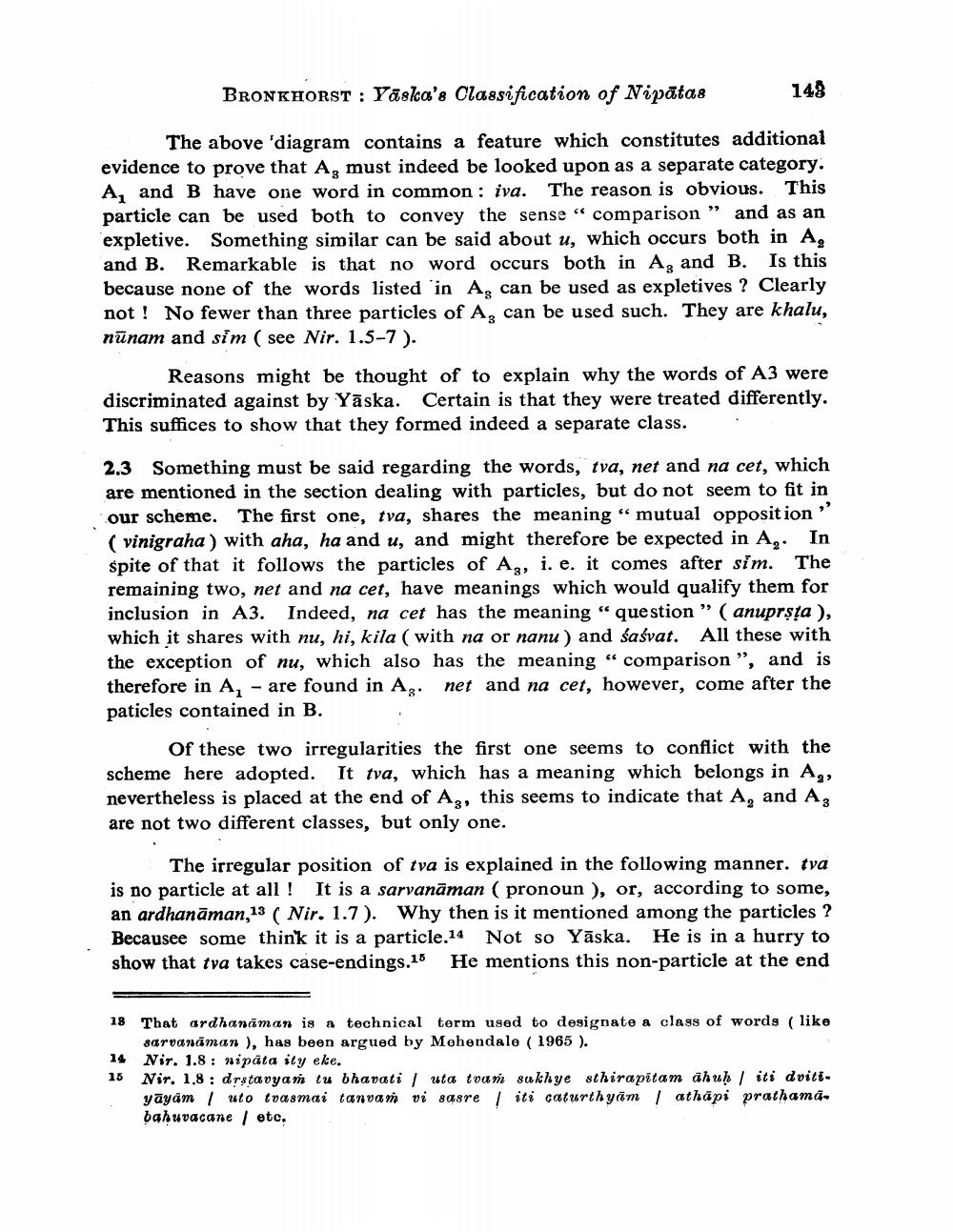Book Title: Yaskas Classification Of Nipatas Author(s): Johannes Bronkhorst Publisher: Johannes Bronkhorst View full book textPage 7
________________ BRONKHORST : Yaska's Classification of Nipatas 148 The above 'diagram contains a feature which constitutes additional evidence to prove that A, must indeed be looked upon as a separate category. A, and B have one word in common : iva. The reason is obvious. This particle can be used both to convey the sense comparison” and as an expletive. Something similar can be said about u, which occurs both in A, and B. Remarkable is that no word occurs both in A, and B. Is this because none of the words listed in A, can be used as expletives ? Clearly not ! No fewer than three particles of A, can be used such. They are khalu, nūnam and sim ( see Nir. 1.5-7). Reasons might be thought of to explain why the words of A3 were discriminated against by Yāska. Certain is that they were treated differently. This suffices to show that they formed indeed a separate class. 2.3 Something must be said regarding the words, tva, net and na cet, which are mentioned in the section dealing with particles, but do not seem to fit in our scheme. The first one, tva, shares the meaning “ mutual opposition" ( vinigraha) with aha, ha and u, and might therefore be expected in Ag. In spite of that it follows the particles of Ag, i. e. it comes after sim. The remaining two, net and na cet, have meanings which would qualify them for inclusion in A3. Indeed, na cet has the meaning “ question " ( anuprşța ), which it shares with nu, hi, kila ( with na or nanu ) and śaśvat. All these with the exception of nu, which also has the meaning "comparison ", and is therefore in A, - are found in Ag. net and na cet, however, come after the paticles contained in B. Of these two irregularities the first one seems to conflict with the scheme here adopted. It tva, which has a meaning which belongs in Ag, nevertheless is placed at the end of Az, this seems to indicate that A, and A, are not two different classes, but only one. The irregular position of tva is explained in the following manner. tva is no particle at all! It is a sarvanāman (pronoun ), or, according to some, an ardhanāman,13 ( Nir. 1.7). Why then is it mentioned among the particles ? Becausee some think it is a particle.14 Not so Yāska. He is in a hurry to show that tva takes case-endings.15 He mentions this non-particle at the end 18 That ardhanaman is a technical term used to designate a class of words (like sarvanaman ), has been argued by Mehendale (1965). 14 Nir. 1.8 : nipata ily eke. Nir. 1.8: drstavyan tu bharati / uta tvan sukhye sthirapitam ahuh / iti dviti. yayam/ uto trasmai tanvaṁ vi sasre / iti caturthyám / athäpi prathama. bahuvacane / etc, 15Page Navigation
1 ... 5 6 7 8 9 10 11 12 13
